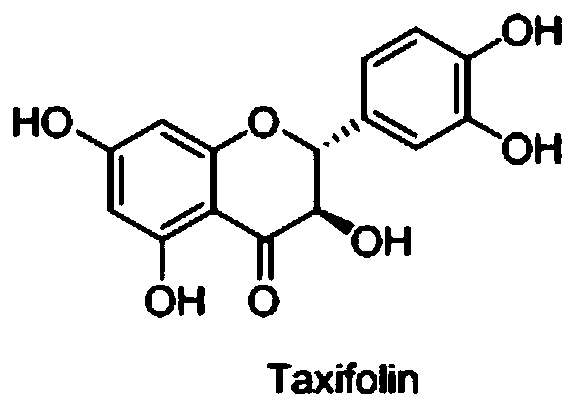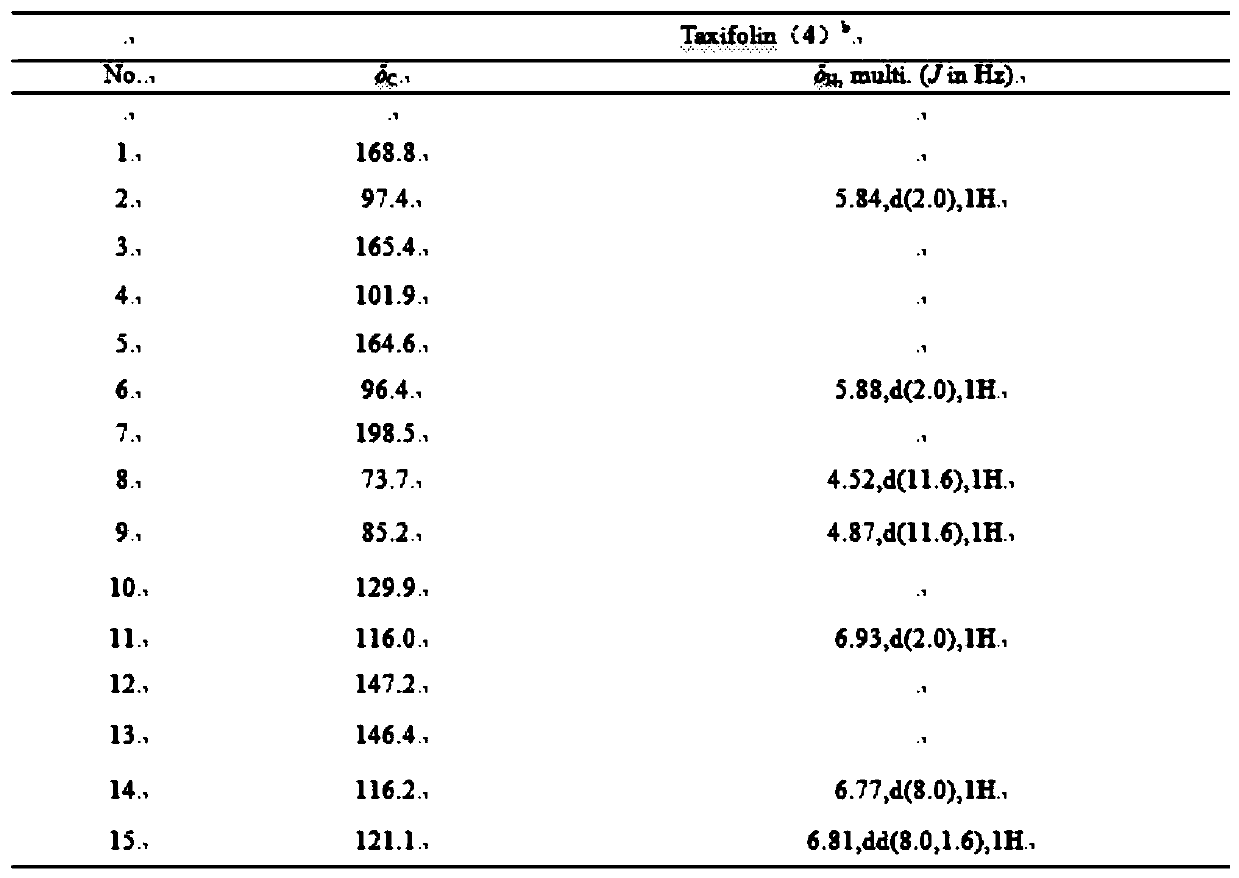Method for separating, purifying and identifying taxifolin from ampelopsis grossedentata tissues
A taxifolin, separation and purification technology, applied in the field of research, development and utilization of vine tea resources, can solve the problems of waste of vine tea resources, underutilization of flavonoid active ingredients, etc., to create economic benefits, promote the development of vine tea industry, The effect of low economic cost
- Summary
- Abstract
- Description
- Claims
- Application Information
AI Technical Summary
Benefits of technology
Problems solved by technology
Method used
Image
Examples
Embodiment 1
[0038] A method for isolating and purifying taxifolin from rattan tea tissue, characterized in that the steps are as follows:
[0039] a. Collect the old leaves and defective leaves of vine tea, and extract the total flavonoids crudely by ultrasonication with ethanol;
[0040] b. Obtain the crude flavonoid extract according to step a and separate it by normal phase silica gel column chromatography to obtain a component containing the target active ingredient;
[0041] c. Separating and purifying the component containing the target active ingredient by semi-preparative high performance liquid phase to obtain the monomer of the active compound;
[0042] d. Analyze the monomer structure of the target compound based on LC-HR-ESI MS, 1D and 2D NMR spectral data.
[0043] In step b, mix the total flavonoids extraction extract with 100-200 mesh normal phase silica gel and mix the sample in equal amounts, pack 5 times the mass of 300-400 mesh normal phase silica gel into a column, numbe
PUM
 Login to view more
Login to view more Abstract
Description
Claims
Application Information
 Login to view more
Login to view more - R&D Engineer
- R&D Manager
- IP Professional
- Industry Leading Data Capabilities
- Powerful AI technology
- Patent DNA Extraction
Browse by: Latest US Patents, China's latest patents, Technical Efficacy Thesaurus, Application Domain, Technology Topic.
© 2024 PatSnap. All rights reserved.Legal|Privacy policy|Modern Slavery Act Transparency Statement|Sitemap



